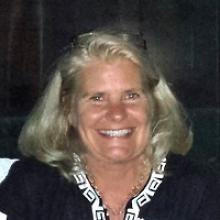
Karen Mesce, Ph.D.
E-MAIL: [email protected]
Research Interests:
Dopamine (DA) is an important and universal modulator of motor control, but neuroscientists have yet to determine precisely how DA-containing neurons and their targeted circuitry choreograph specific locomotor programs. My research laboratory is addressing such important questions at the level of single identified neurons; often at times while the intact animal is behaving. The simpler nervous system of the leech (Hirudo species) was selected for study because it contains relatively large and physiologically accessible neurons and a hierarchical circuit organization, thus facilitating studies of locomotion, body movement and descending control. Specifically, we are now characterizing constituents of the pattern-generating network underlying crawling-related behavior, and determining how DA changes the properties of neurons to facilitate their participation in crawling. This approach often leads us naturally to an understanding of the neuronal bases of decision-making; for example, we have found that whenever DA triggers crawling then swimming is inhibited. We use a variety of behavioral, electrophysiological, anatomical and computational methods to study how DA promotes crawling behavior. Our most recent studies have revealed how unit oscillators for locomotion are coupled through long-distance and local connections. Our simpler neural networks are perfect for investigation by graduate students as the neurons are relatively accessible for experimental analysis and research questions can be addressed at the level of the intact organism down to the level of single neurons and the cell-molecular machinery that enables them to participate adaptively within their networks of operation.
Selected Publications:
(For a comprehensive list of recent publications, refer to PubMed, a service provided by the National Library of Medicine.)
- Collins MN, Mesce KA. A review of the bioeffects of low-intensity focused ultrasound and the benefits of a cellular approach. Front Physiol. 2022 Nov 10;13:1047324.
- Collins MN, Legon W, Mesce KA. The inhibitory thermal effects of focused ultrasound on an identified, single motoneuron. eNeuro. 2021 Apr 13:ENEURO.0514-20.2021.
- Collins MN, Mesce KA. Focused ultrasound neuromodulation and the confounds of intracellular electrophysiological investigation. eNeuro. 2020 Jul 31:ENEURO.0213-20.2020.
- Auletta A, Rue MCP, Harley CM, Mesce KA. Tyrosine hydroxylase immunolabeling reveals the distribution of catecholaminergic neurons in the central nervous systems of the spiders Hogna lenta (Araneae: Lycosidae) and Phidippus regius (Araneae: Salticidae). J Comp Neurol. 2020;528(2):211-230.
- Puhl JG, Bigelow AW, Rue MCP, Mesce KA. Functional recovery of a locomotor network after injury: Plasticity beyond the central nervous system. eNeuro. 2018 Jul 11;5(4). pii: ENEURO.0195-18.2018.
- Mesce KA, Alania M, Gaudry Q, Puhl JG. The stomatogastric nervous system of the medicinal leech: its anatomy, physiology and associated aminergic neurons. J Exp Biol. 2018 Mar 29;221(Pt7) pii: jeb175687.
- Tedjakumala SR, Rouquette J, Boizeau ML, Mesce KA, Hotier L, Massou I, Giurfa M. A tyrosine-hydroxylase characterization of dopaminergic neurons in the honey bee brain. Front Syst Neurosci. 2017 Jul 10;11:47.
- Thompson KT, Harley CM, Barthel GM, Sanders MA, Mesce KA. Plasmon resonance and the imaging of metal-impregnated neurons with the laser scanning confocal microscope. Elife. 2015 Dec 15;4. pii: e09388.
- Harley CM, Reilly MG, Stewart C, Schlegel C, Morley E, Puhl JG, Nagel C, Crisp KM, Mesce KA. Compensatory plasticity restores locomotion after chronic removal of descending projections. J Neurophysiol. 2015;113(10):3610-3622.
- Olson JF, Moon RD, Kells SA, Mesce KA. Morphology, ultrastructure and functional role of antennal sensilla in off-host aggregation by the bed bug Cimex lectularius. Arthropod Struct Dev. 2014;43(2):117-122.
Former Graduate Students:
Morgan Newhoff (Ph.D. 2020, Neuroscience, University of Minnesota).
Josh Puhl (Ph.D. 2011, Neuroscience, University of Minnesota).
Katherine Himes (Ph.D. 2007, Neuroscience, University of Minnesota).
Kevin Crisp (Ph.D. 2003, Neuroscience, University of Minnesota).
Laura Gilchrist (Ph.D. 1996, Neuroscience, University of Minnesota).
Therese Amos (Ph.D. 1993, Neuroscience, University of Minnesota).
